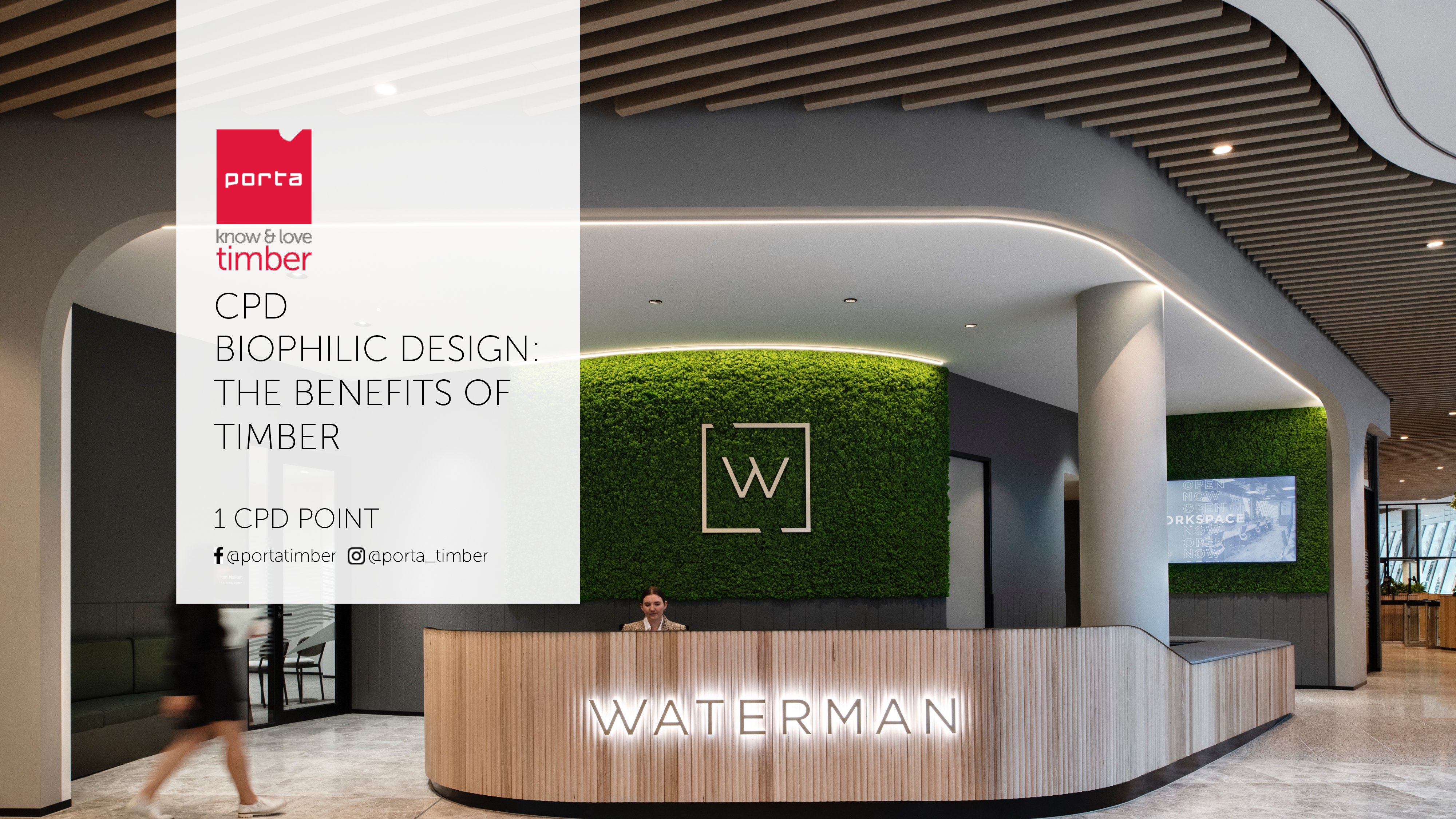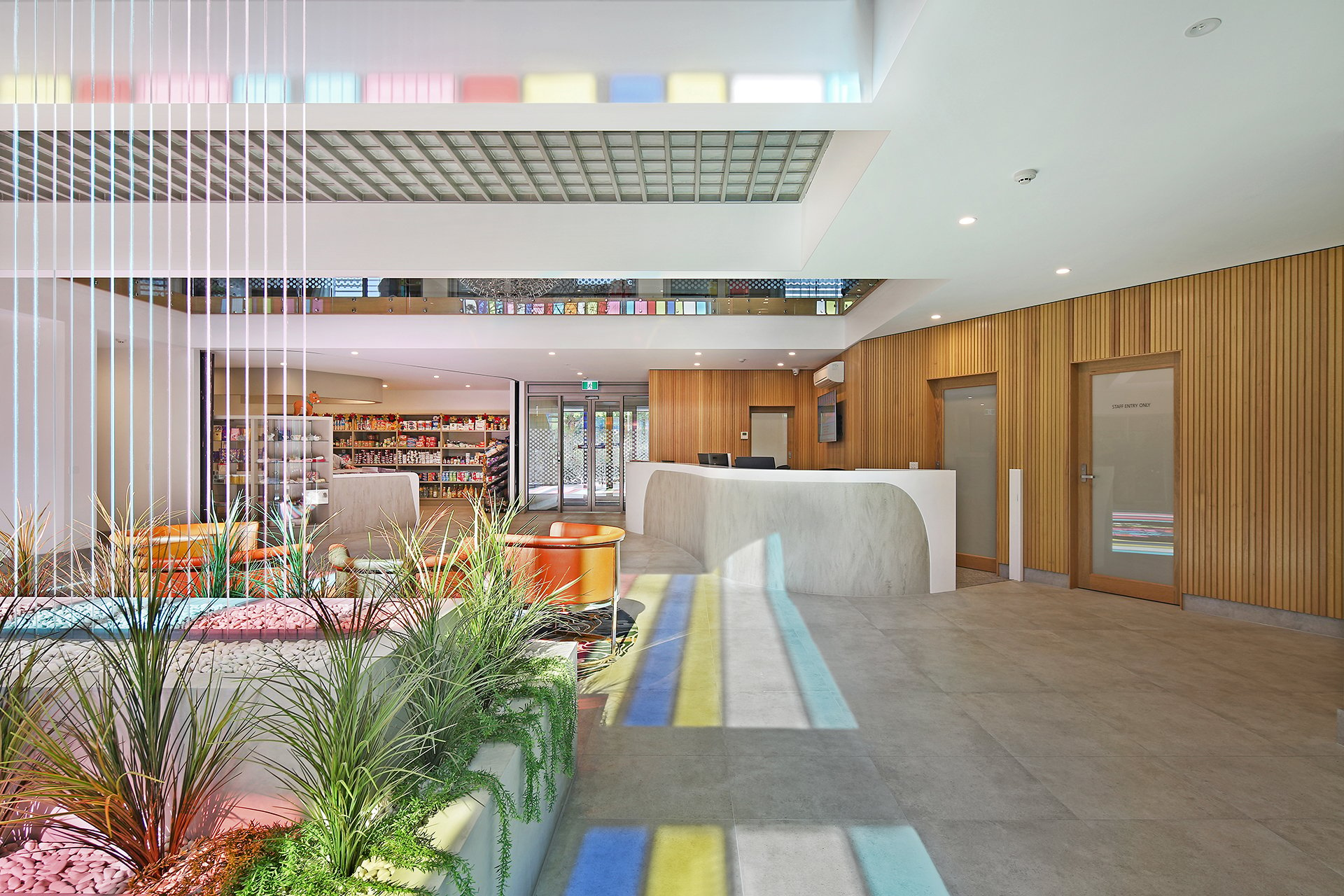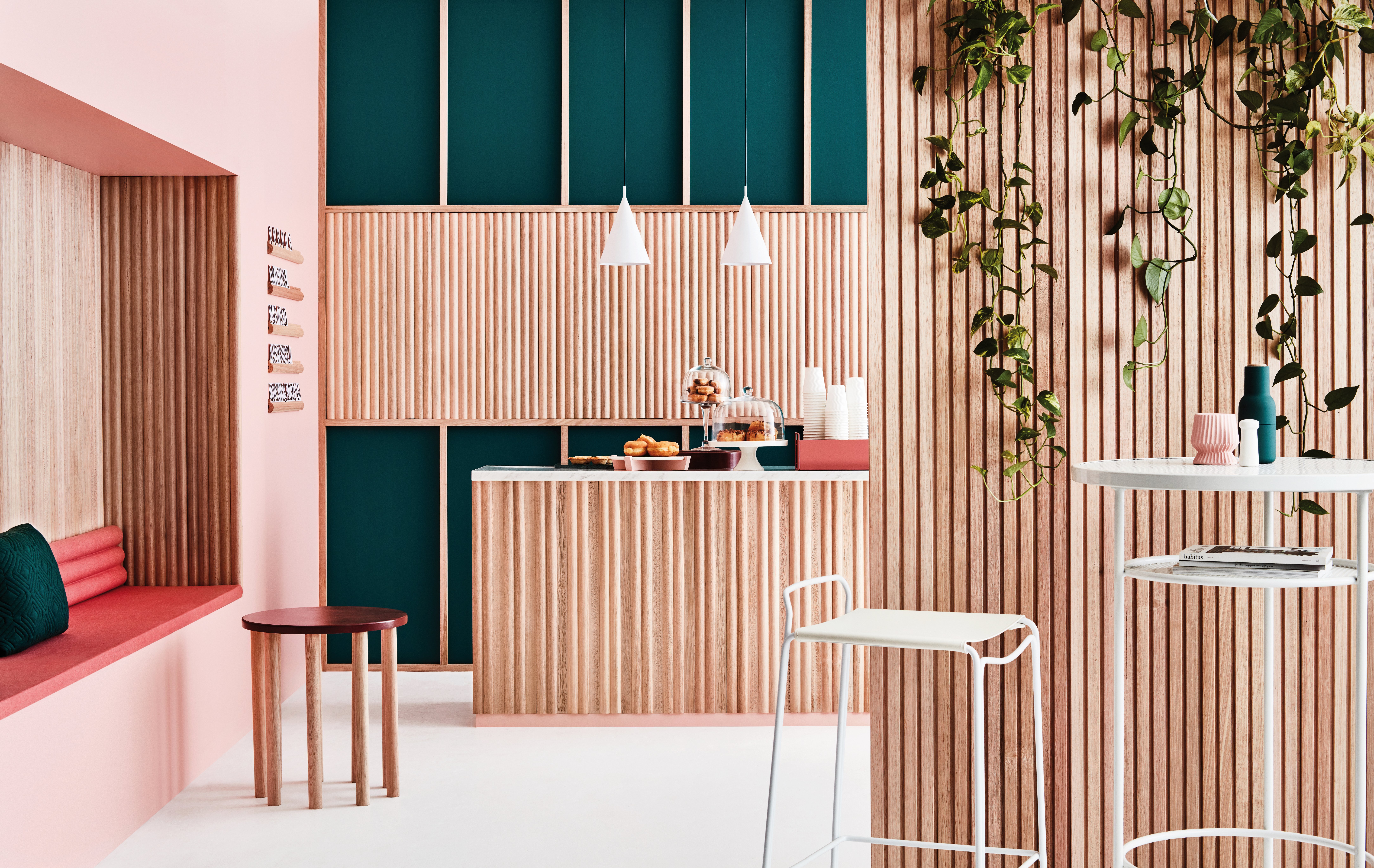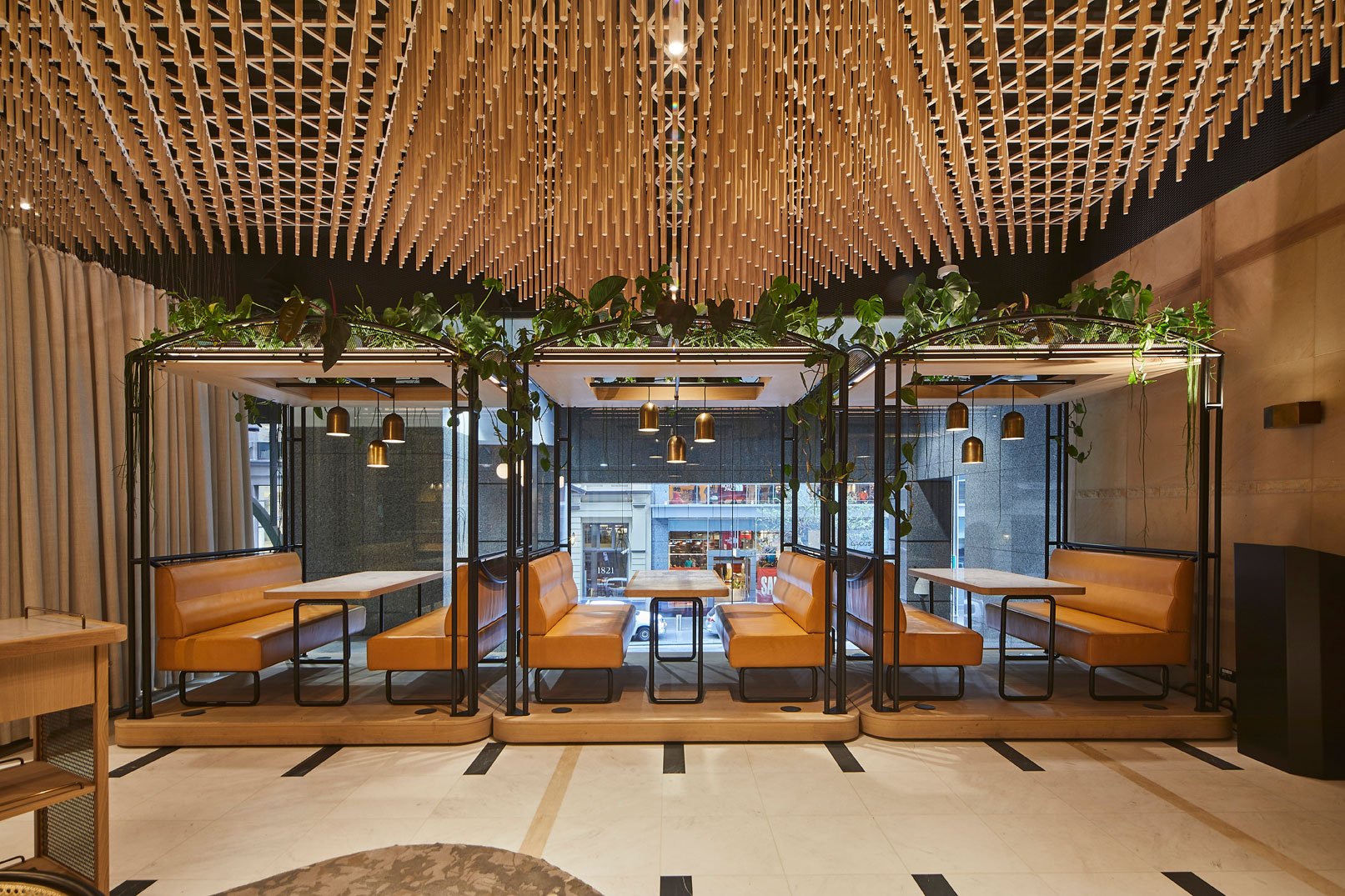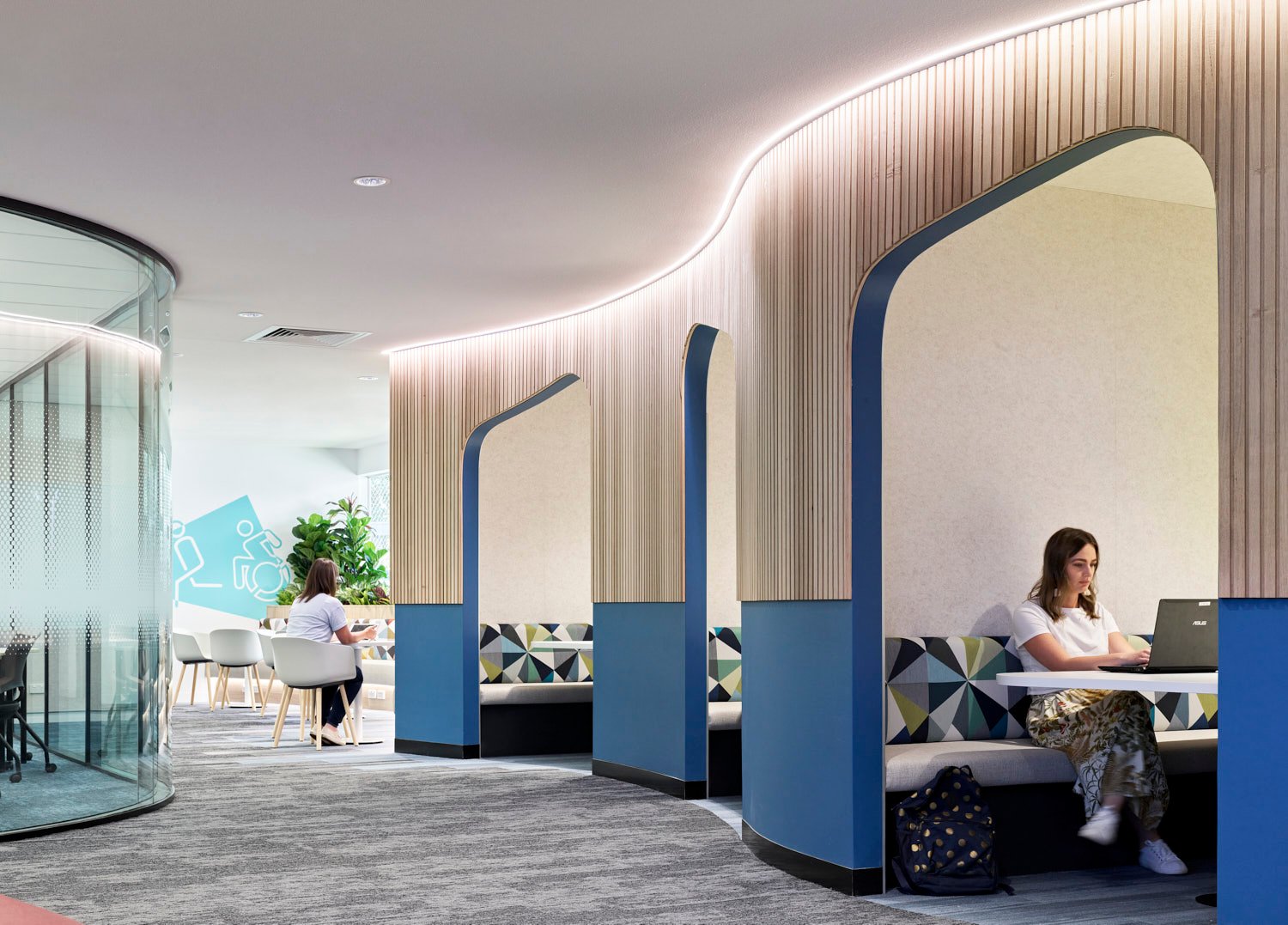Porta, Australia’s leading manufacturer of timber mouldings and lining boards, presents informative Continual Professional Development (CPD) sessions to architects Australia wide.
CPD refers to the process of documenting the skills, knowledge and experience that a professional acquires in their industry, formally and informally. The term refers to a portfolio documenting the individual’s development as a professional. CPD has become a vital part of career development and in some cases, a requirement to hold certain licences as is the case for architects.
Porta’s presentations are aligned with the CPD requirements set by the Australian Institute of Architects (AIA).
Porta’s Biophilic Design CPD presentation is created to help architects, interior designers and design professionals understand the benefits of timber using fundamental biophilic design concepts.
What is 'Biophilic Design'?
‘Biophilia’ is the innate desire of humans to interact with nature and other living things. Biophilic design is about fulfilling biological and psychological need for humans to ‘be one’ with nature through modern design enhancing mental and physical wellbeing.
Biophilic design connects people and the natural world by incorporating elements of nature such as natural light, airflow, water, plants, and organic materials including timber in the built environment – both residential and commercial.
Biophilic design is linked to a range of positive health responses particularly in the workplace, education institutions and healthcare practices. These benefits include increased efficiency and performance, improved concentration, reduced stress, and an increase in positive emotions. Through the use of natural materials in the built environment, it promotes relaxation of the brain, ocular muscles, and lenses as well as a decrease in blood pressure and stress hormones.
Proven Research
Porta has sourced information for this presentation from research and studies undertaken by the Forest & Wood Products Australia (FWPA) and Planet Ark.
The research findings link biophilic design to a range of positive health responses in humans. The report details increased levels of wellbeing, productivity, creativity and in workplaces, and a reduction in absenteeism.
Among all available natural options, timber is the most popular material to bring nature indoors for functionality, architectural flexibility, and physiological and psychological benefits.
The aesthetic benefits are that timber is naturally beautiful with beneficial health and wellbeing traits which contributes to the main drivers of its popularity. There are also environmental advantages of timber, especially when sourced from sustainably managed forests such as Porta’s various timber species.
In terms of biophilic design, timber is the premier solution for incorporating nature into built environments.
There is a proven relationship between exposure to timber in the workplace and employees' reports of positive wellbeing.
A study was undertaken of 1,000 ‘typical’ Australians working in indoor environments, covering the impact of timber exposure on worker satisfaction and performance. The study compared workplaces with a high proportion of timber, people who work in spaces with less than 20% natural-looking timber surfaces were significantly less satisfied.
The results revealed the more exposure to timber, the higher rates of productivity, ability to concentrate and overall mood more positively, reported reduced levels of stress.
The mental health benefits of timber exposure go beyond the workplace and can be extended to schools and hospitals and residential buildings. Use of timber in classrooms links to lower stress levels in students.
Additionally, in healthcare environments, natural materials and views of the outdoors are associated with more positive moods and dispositions in patients, visitors, and staff.
There are also psychological benefits proven by research indicating that use of timber indoors can promote healing and recovery. Timber is linked to better patient outcomes including quicker recovery times, decreased pain perception, and increased happiness. Exposure to timber is proven to lower blood pressure and heart rate.
Another benefit of the use of timber in a healthcare environment is the improvement of indoor air quality by absorbing and releasing moisture. By balancing humidity levels and improving indoor air quality, it can improve occupant’s health and quality of life, whereas poor indoor air quality can exacerbate pre-existing conditions or cause new health issues.
The exploration of timber is a global trend according to international research undertaken by Porta. As part of this trend research the interior world is reimagined with a strong focus on bringing nature indoors and is relevant to both residential and commercial environments.
CPD Presentations
Porta is committed to providing architects and designers with the knowledge and resources to specify and design with timber for optimal performance.
Porta’s CPD presentations are for architects, and design professionals who love the feel, warmth, and aesthetics of using timber in their designs.
We offer an in-house presentation that provides a valuable opportunity to expand design and technical knowledge. Porta’s presentations build on the understanding of designing with timber including design principles, along with updates on the latest timber products and services.
The architectural use of timber not only serves a functional, structural, or aesthetic purpose, but it also establishes a material link to nature that improves the health and wellbeing of building occupants.
To find out more about biophilic design, book an in-house CPD presentation, contact us and one of our presenters will be in contact to schedule a suitable date and time.

